Taking Mosquito Habitat Observations - GLOBE Observer
Taking Mosquito Habitat Observations
Watch the next video:Mosquito Habitat Mapper - Getting Started (Sample Collection)
The GLOBE Observer app has detailed instructions to walk you through an observation of a mosquito habitat. Additional resources to learn more about mosquitoes and how to take observations can be found below.
Jump to: Tips and Tricks -- FAQs -- Tutorials
How to Observe:
- Identify and photograph a potential mosquito habitat, i.e. source of standing water, or a place where water could collect, and report if you see any mosquito larvae present in the water (required)
- Sample and count mosquito larvae present in the water (requires a scoop or container to take a sample, optional)
- Photograph larvae using a smartphone clip-on magnifying lens or microscope, and use a scientific key within the app to identify the species of the larvae (requires magnification from a microscope or macrolens attachment, optional)
- If possible, eliminate the habitat (i.e. by emptying out a container of water, optional)
Safety tips:
- While mosquito larvae are harmless, adult mosquitoes may be present when taking observations. Female mosquitoes bite and can potentially transmit disease. You should wear long sleeves and apply insect repellant containing DEET to avoid bites.
- Protect yourself from contaminated water sources with gloves and safety goggles. Trash, like water bottles and plastic bags, can become mosquito habitats when they collect water. If you will be cleaning up trash, you may want gloves and trash grabbers, and don’t handle any trash that appears unsafe.
When to observe:
- Observe any time, even when there aren’t mosquitoes - observations before the beginning of mosquito season give a baseline for seasonal changes. Mosquitoes can be active earlier than you expect.
Where to observe:
- A potential mosquito habitat is anywhere that provides a pool of still water that allows the larvae to grow. This can be natural puddles, ditches, or trash and other abandoned items. You can find larvae in water sources as small as a bottle cap and as large as a cistern.
- Make sure you have permission to collect samples and eliminate habitats if needed.
- You may also wish to set up a mosquito trap to see if there are mosquitos in your area.
- Mosquitoes do play a role as part of the natural ecosystem, as food sources and pollinators, so we are especially focused on eliminating habitats created by human activity (for example discarded items) and near human habitation to reduce the threat of disease, rather than trying to get rid of all mosquitoes everywhere.
Earn Mosquito Habitat Awards:
- As you collect data, you can earn milestone badges for every 1-5-10-25-50-75-100-150-200-250-300-400+ observations you submit under each protocol. You will receive an email with each milestone badge, unless you choose to opt-out under your account settings.
- You can also start a streak by collecting data for more than two days in a row. Missing Saturday and Sunday will not disrupt your streak. Track your badges and streaks under My Achievements on the GLOBE Observer app home screen.
- Learn more.
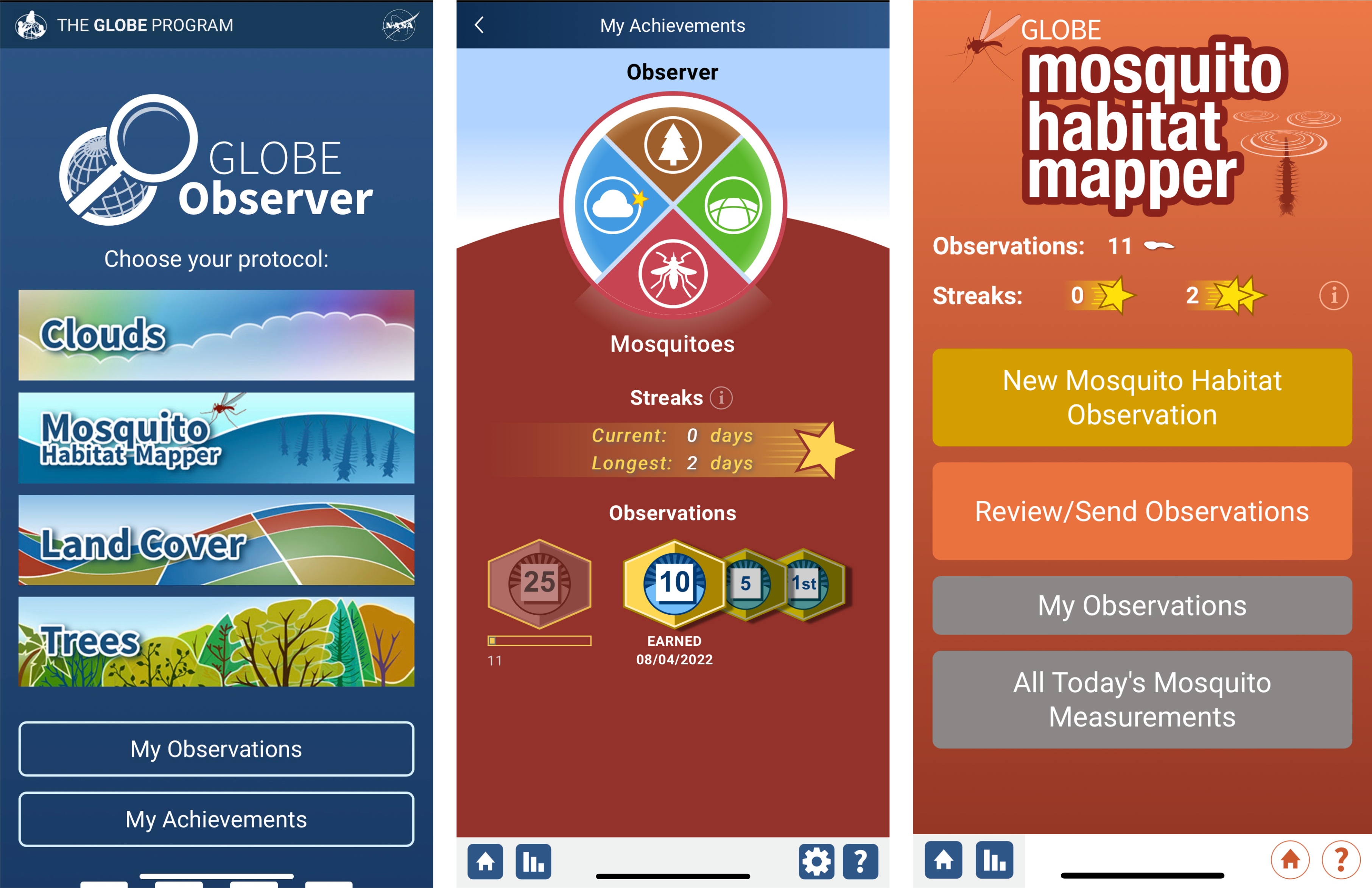
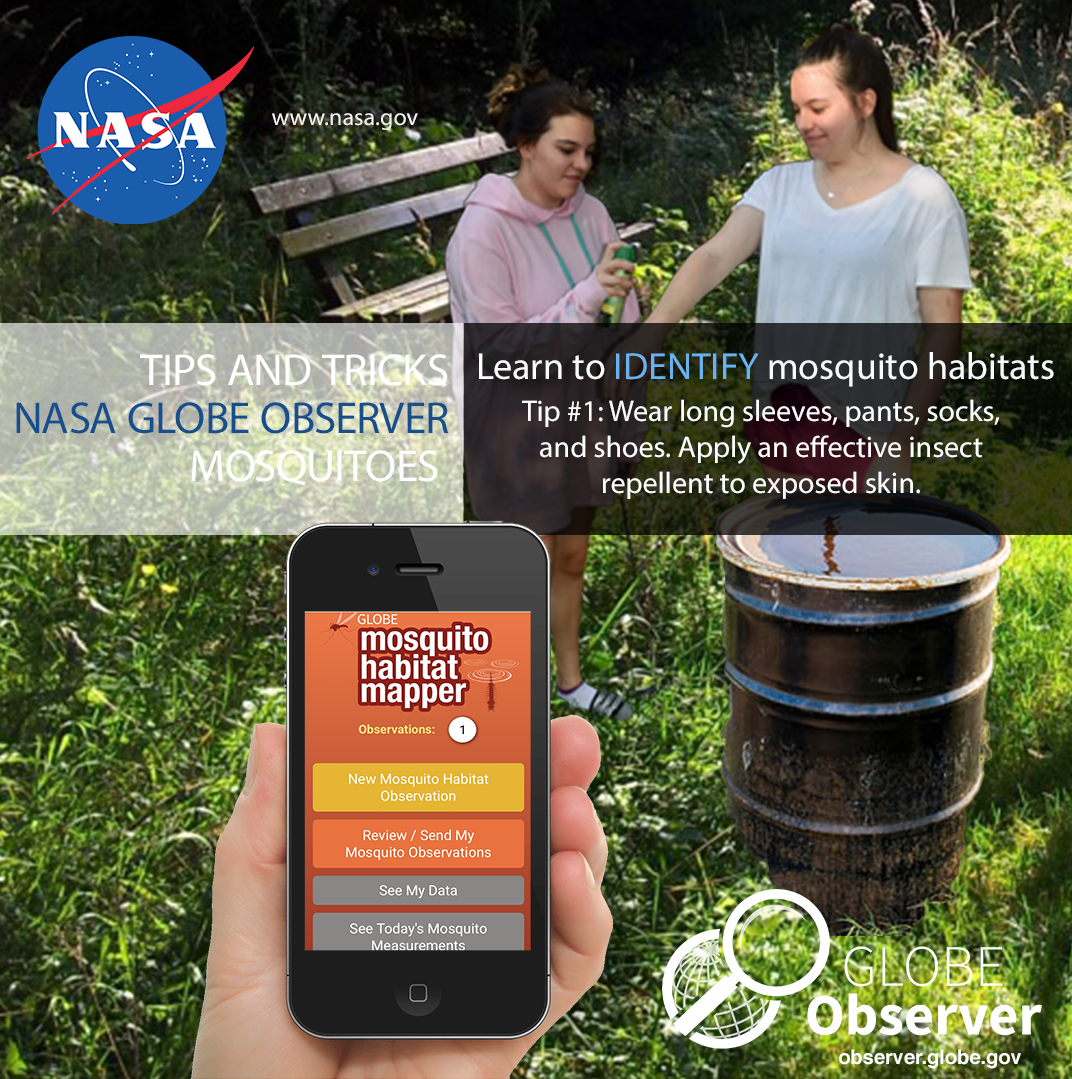

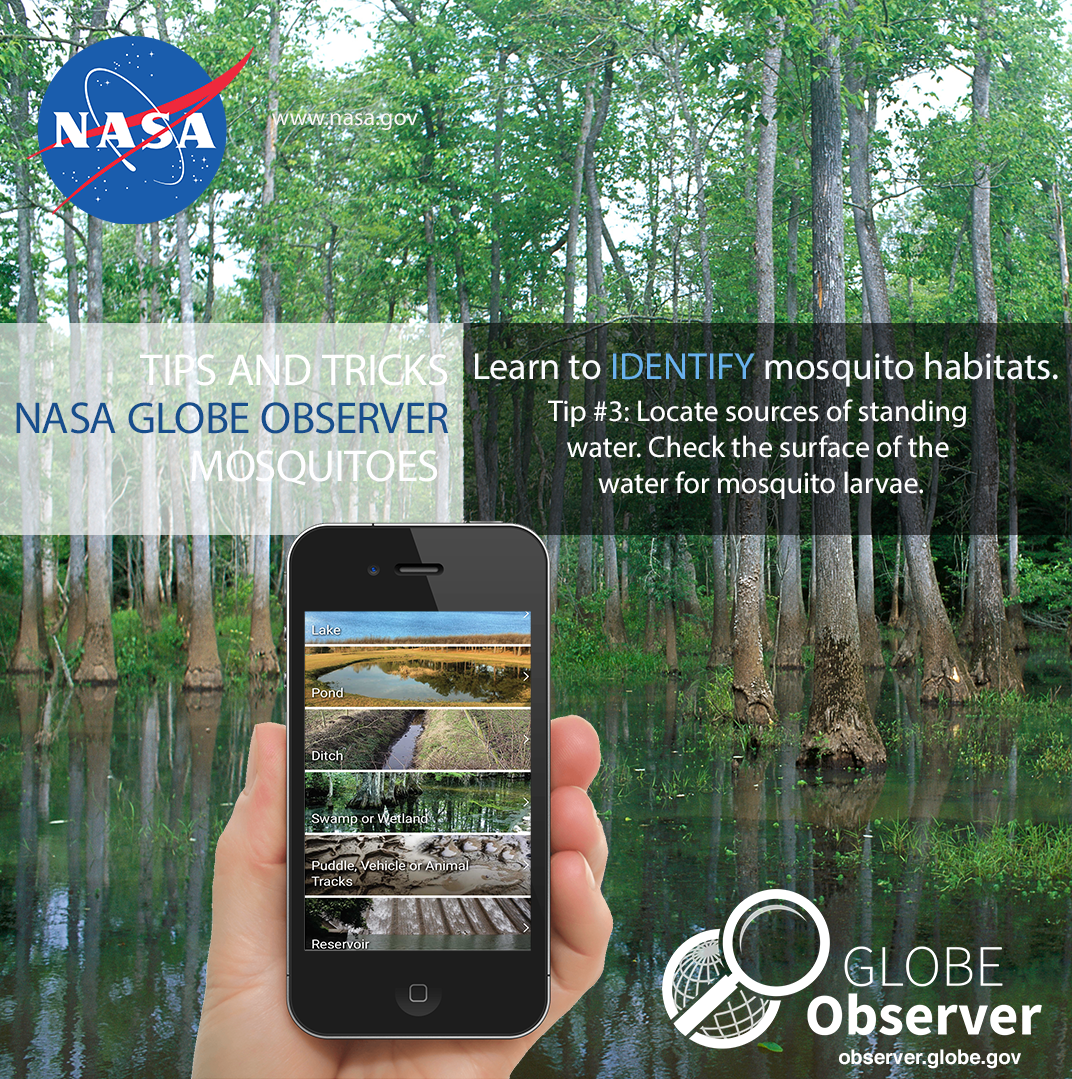
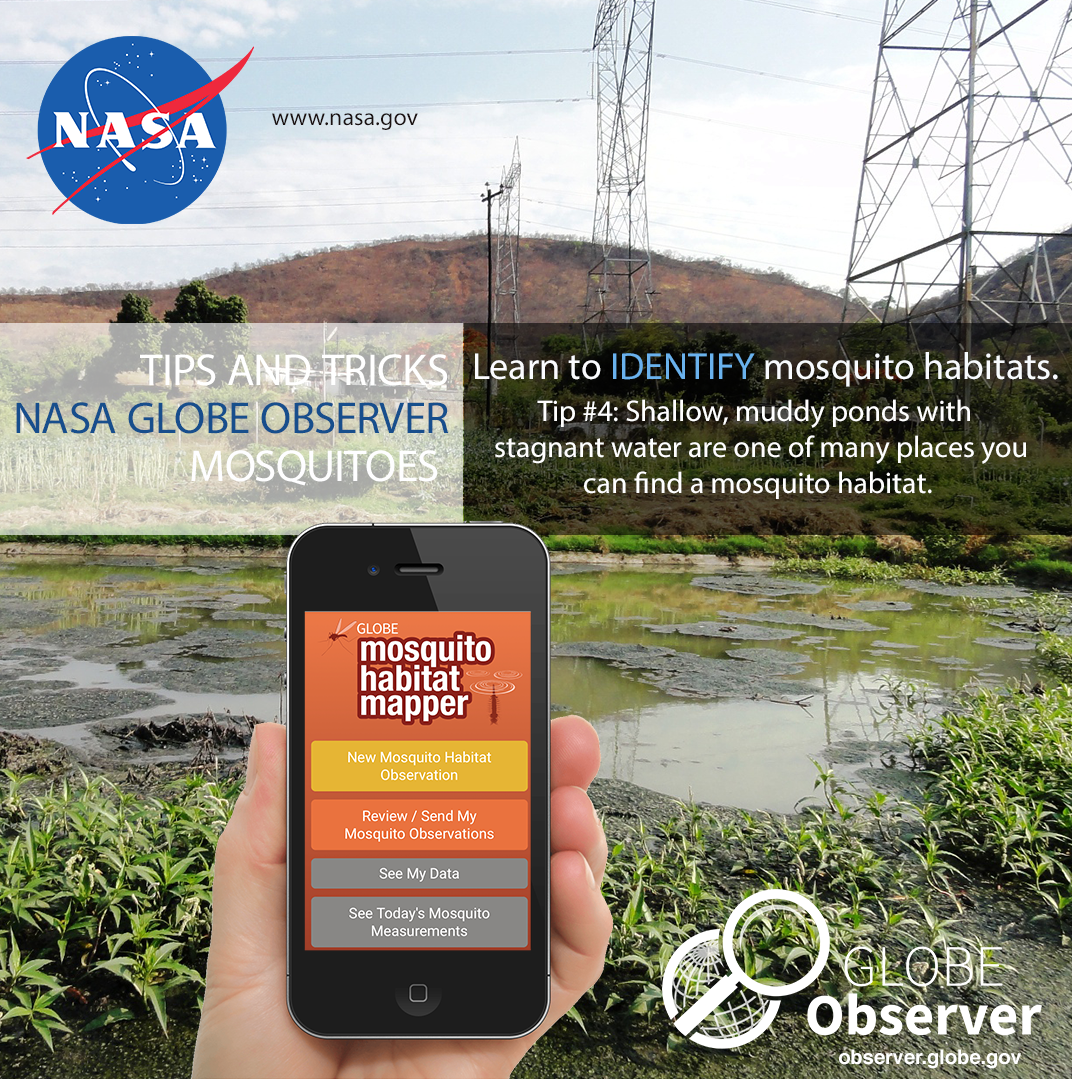
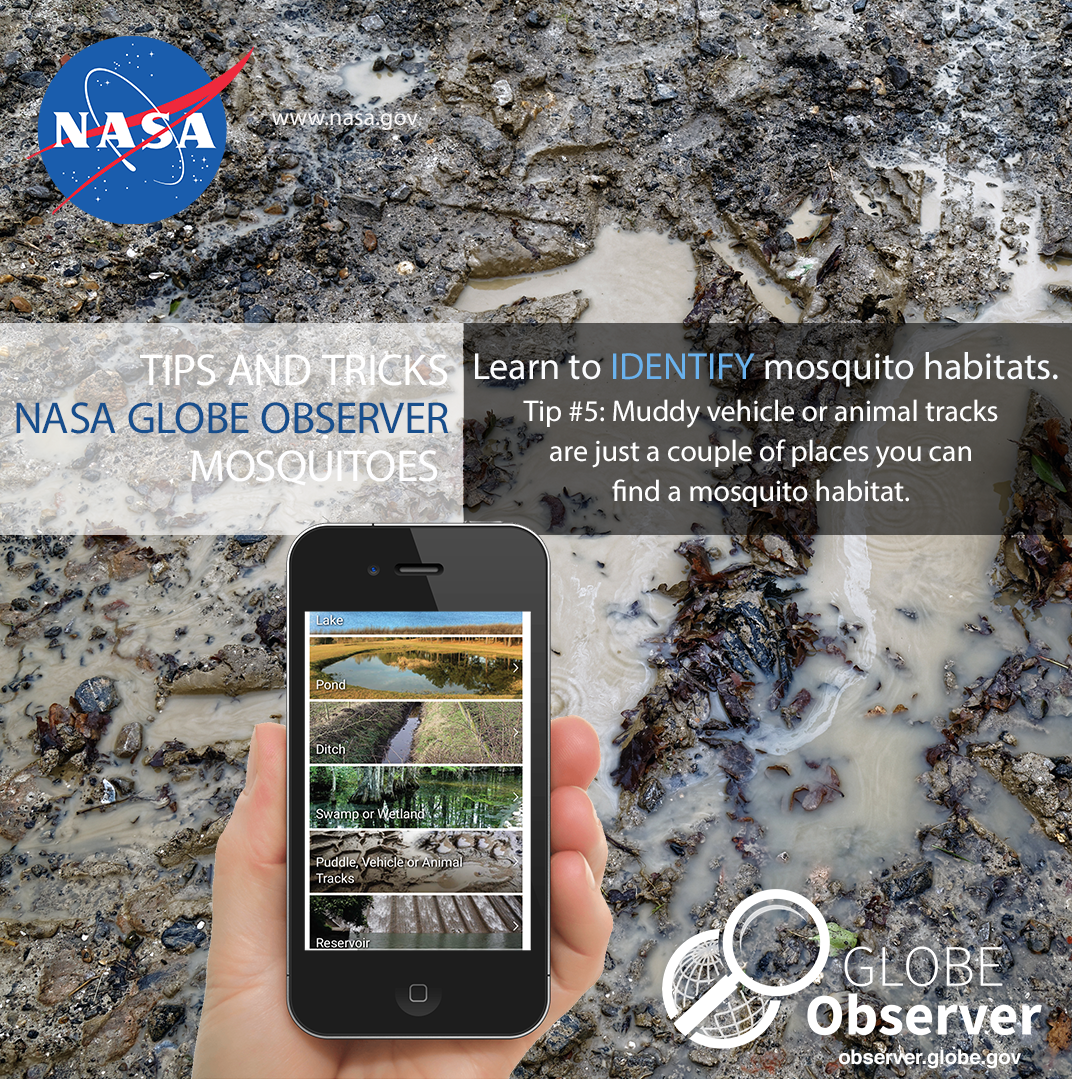
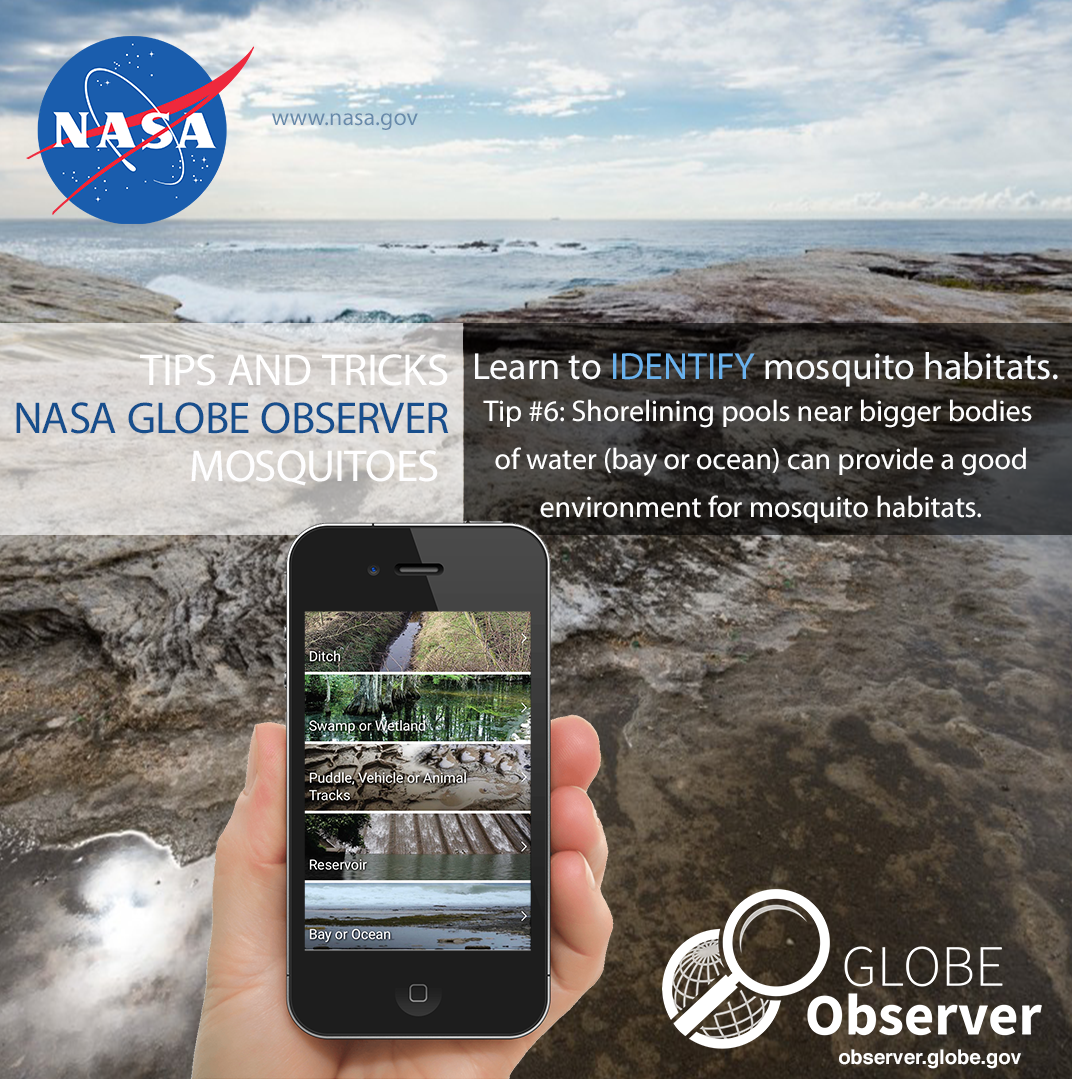
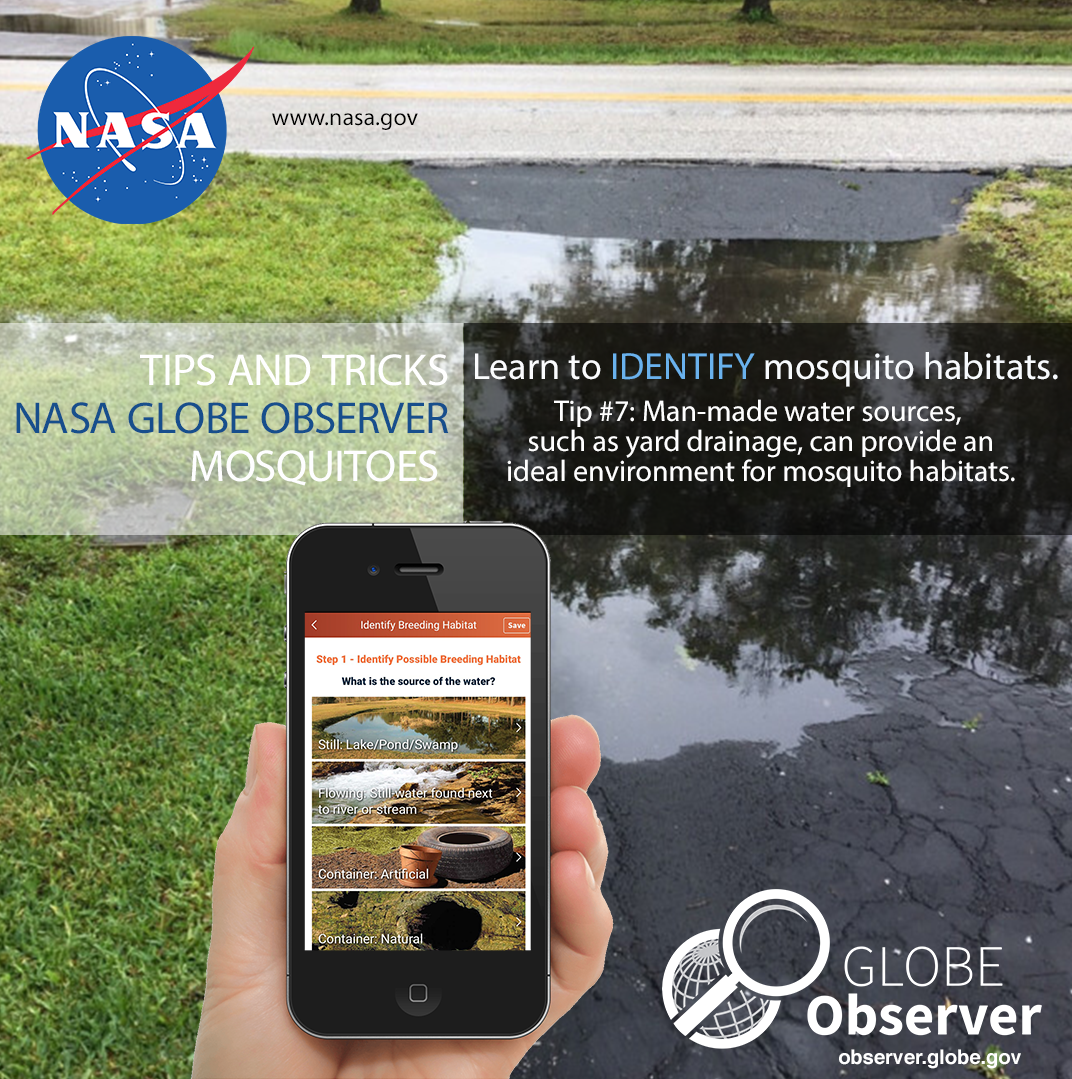
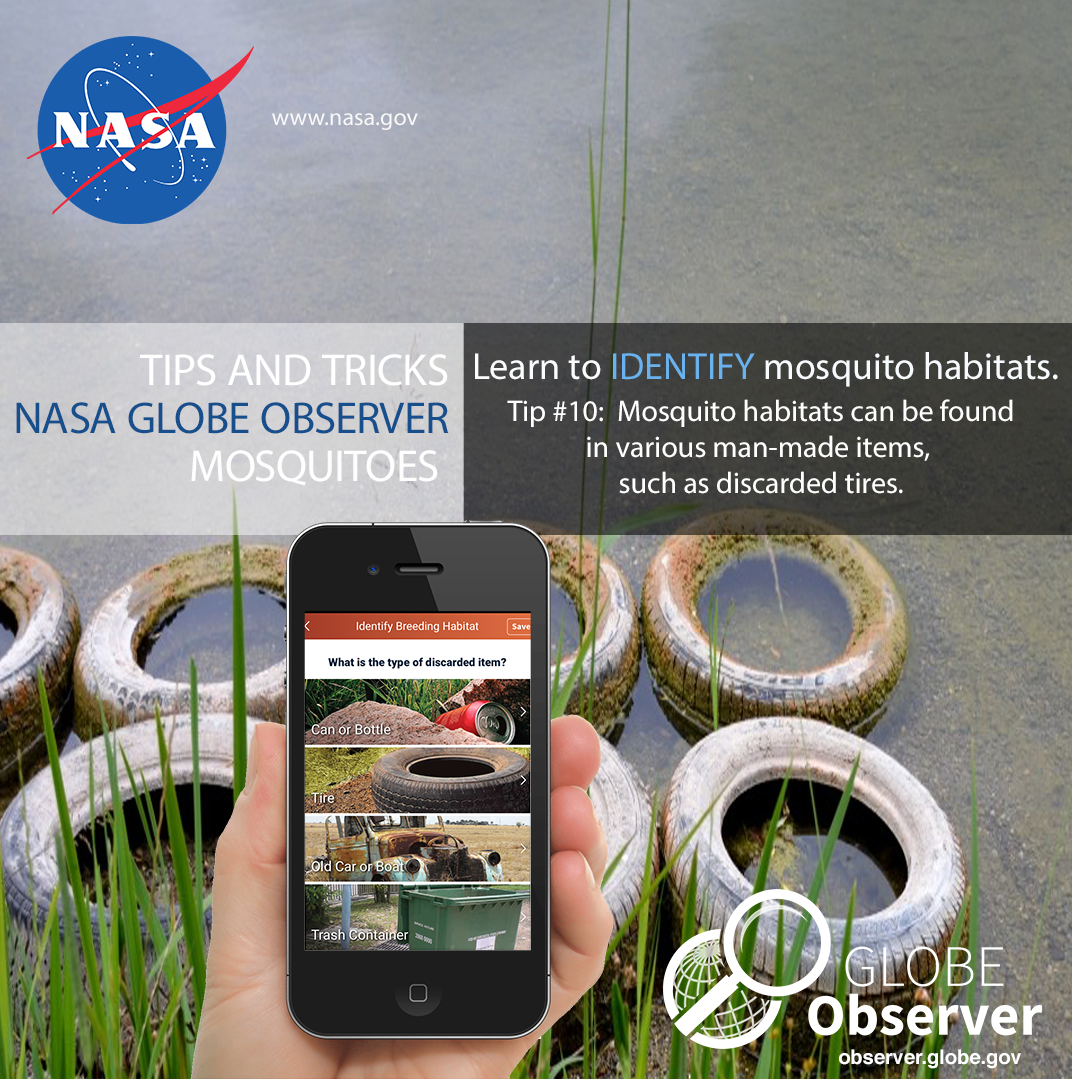
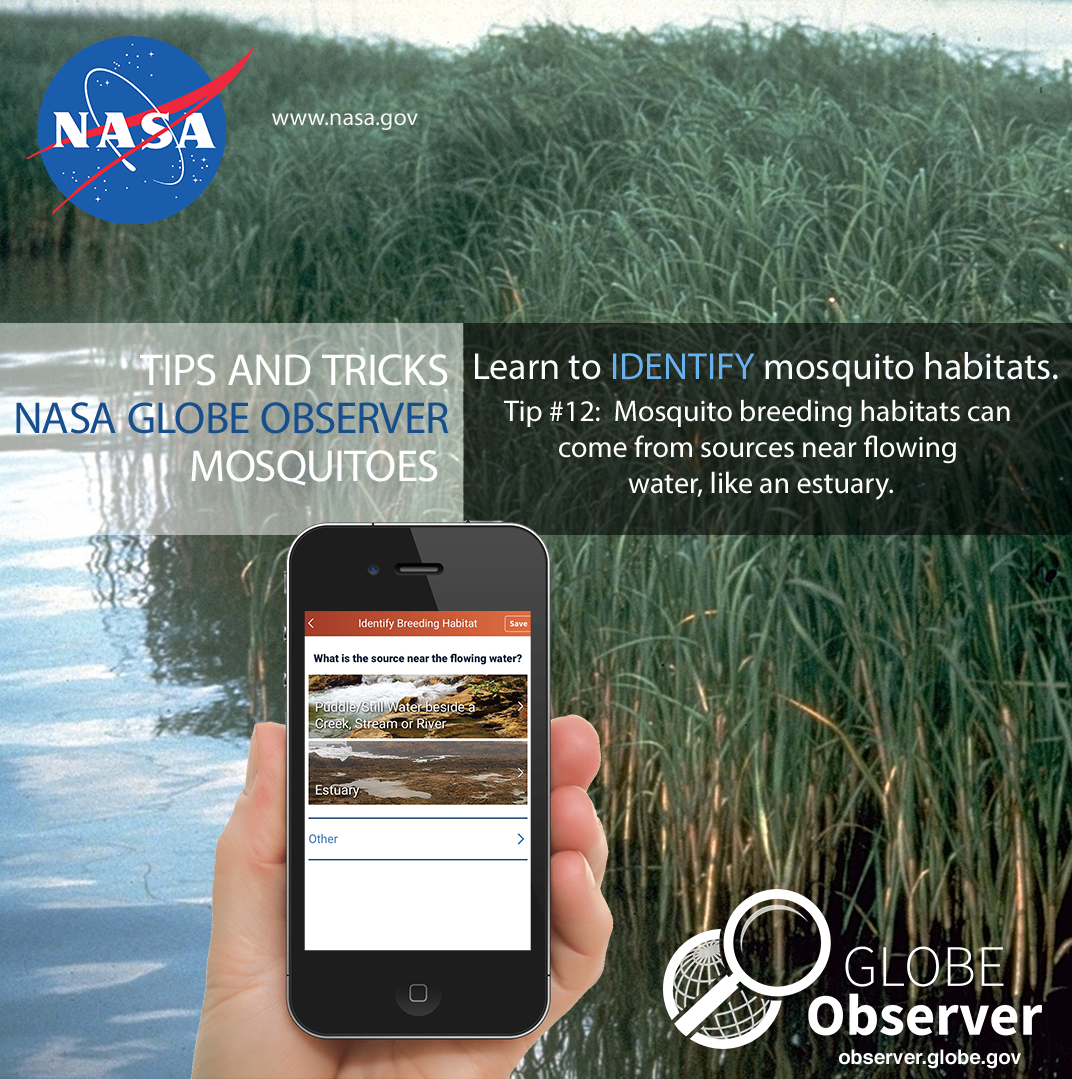
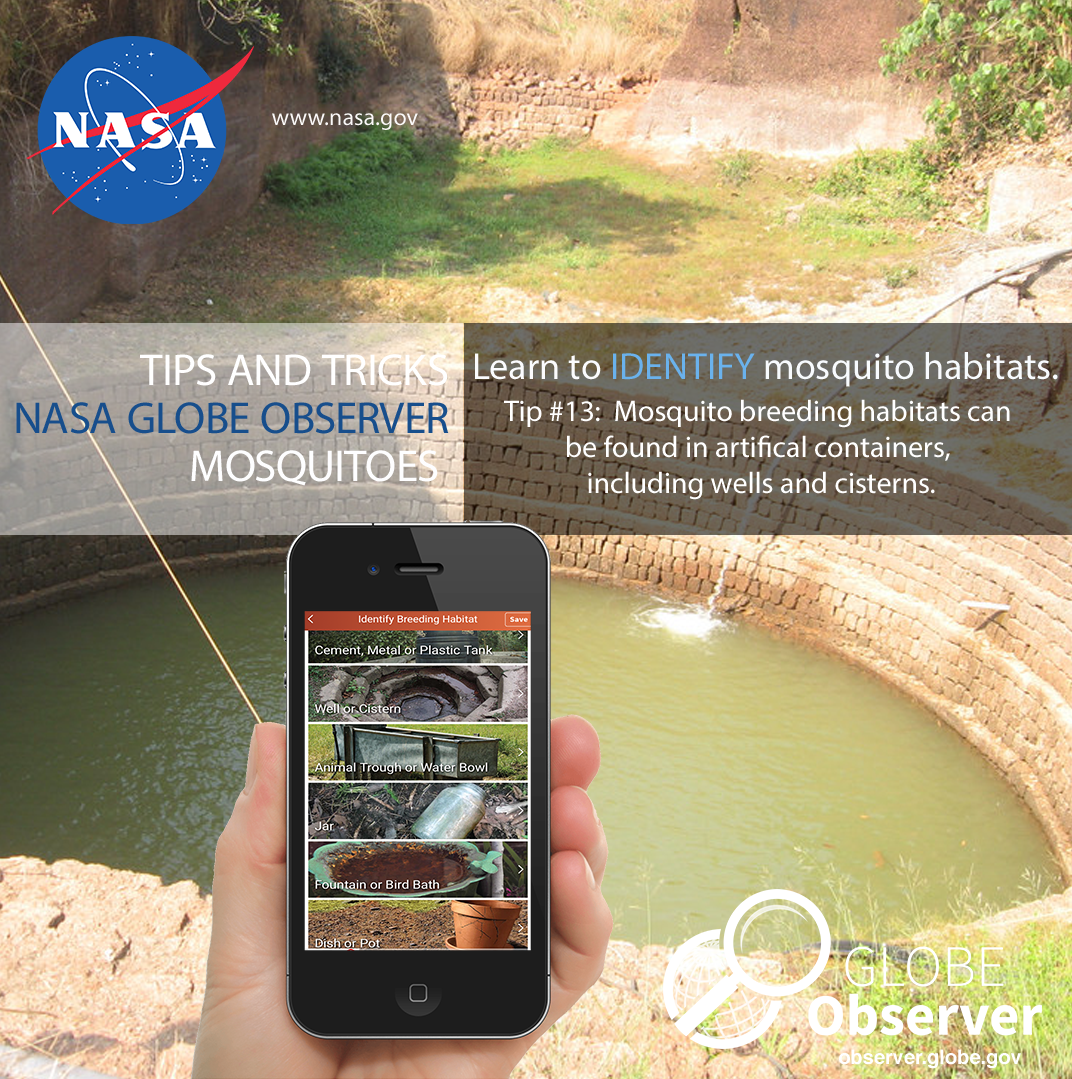
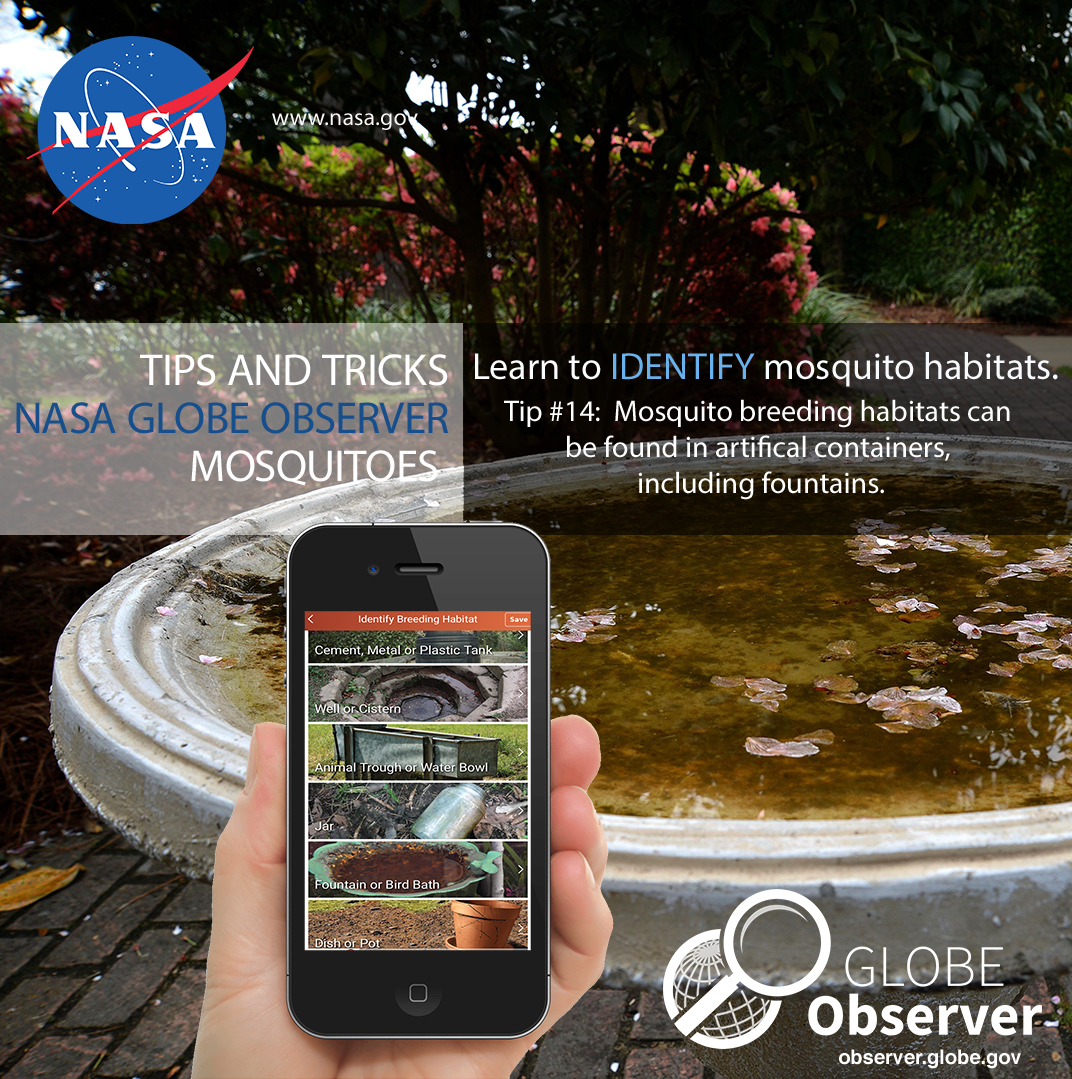
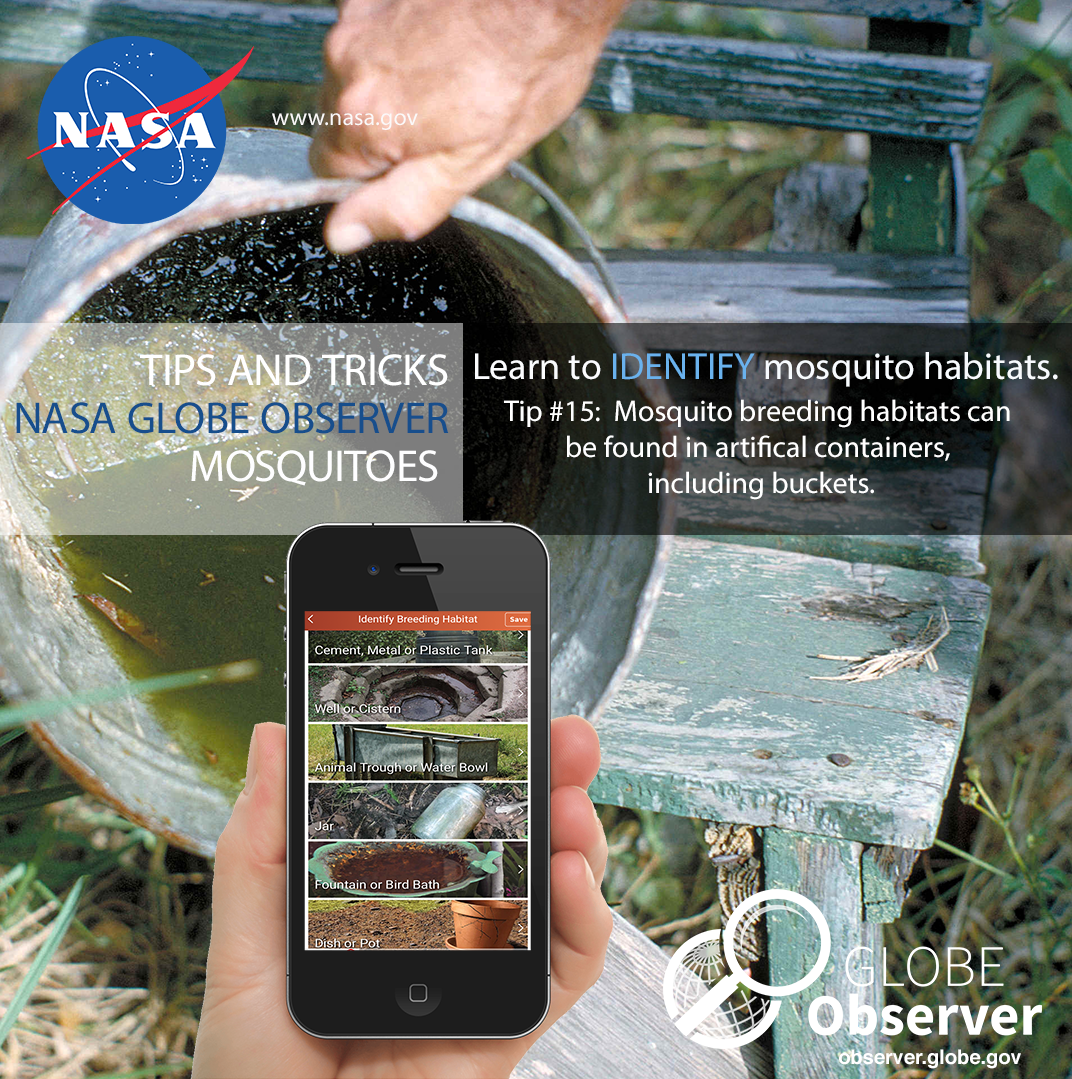
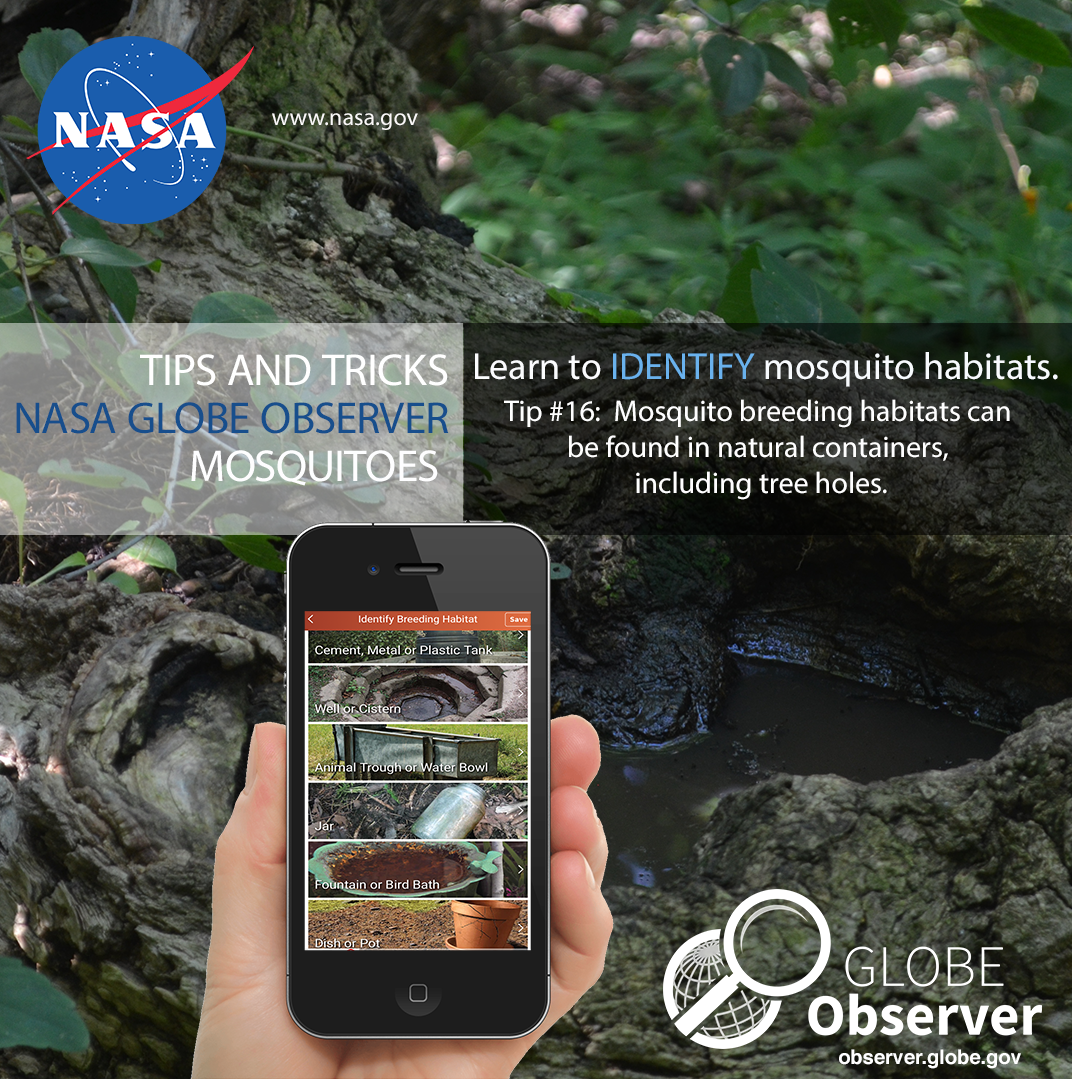
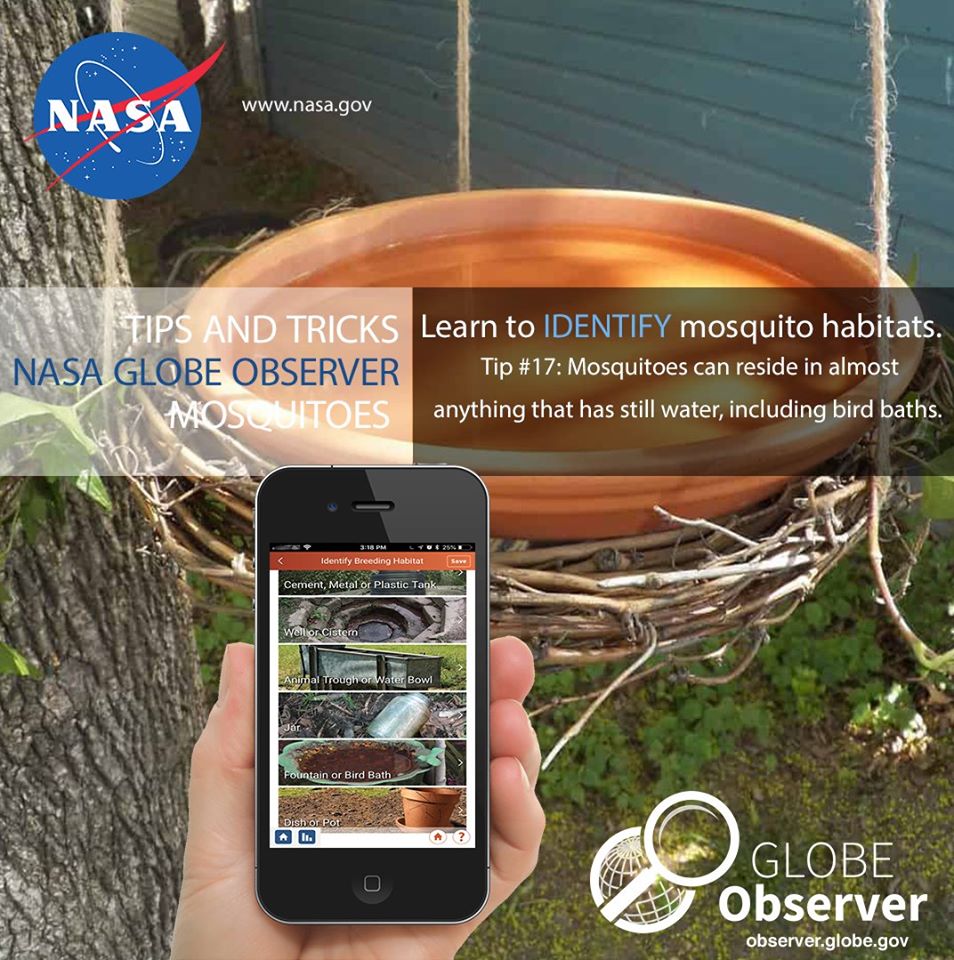
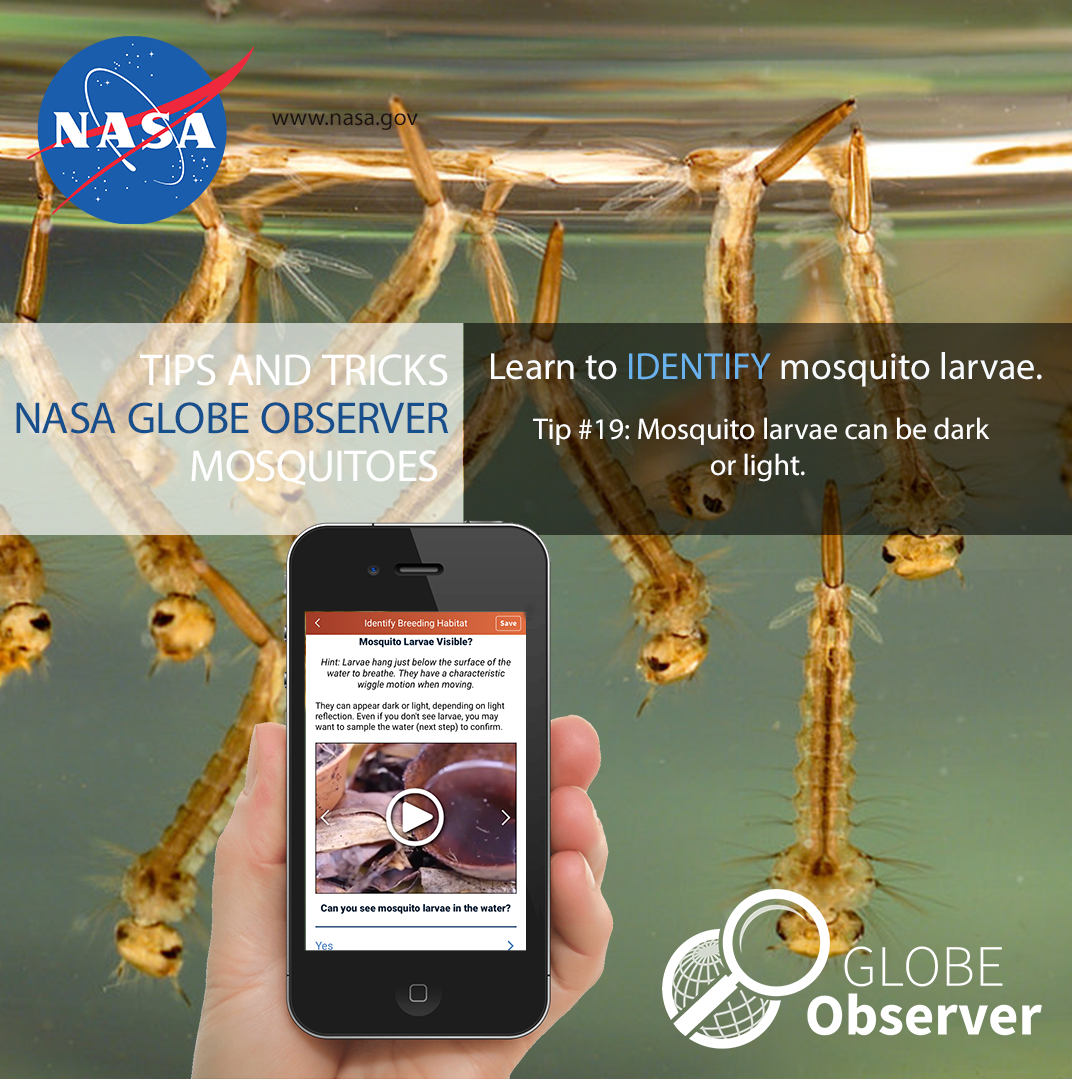
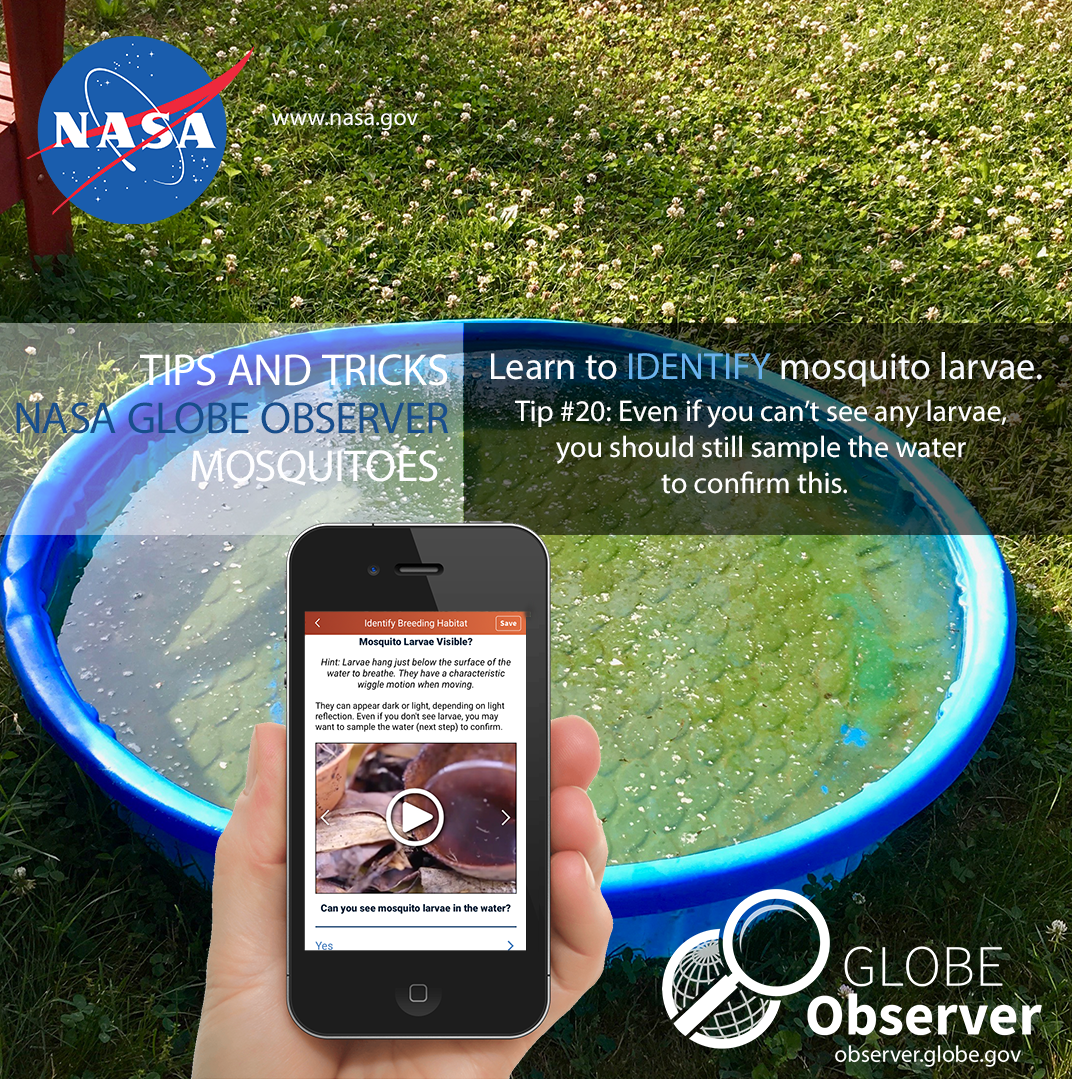

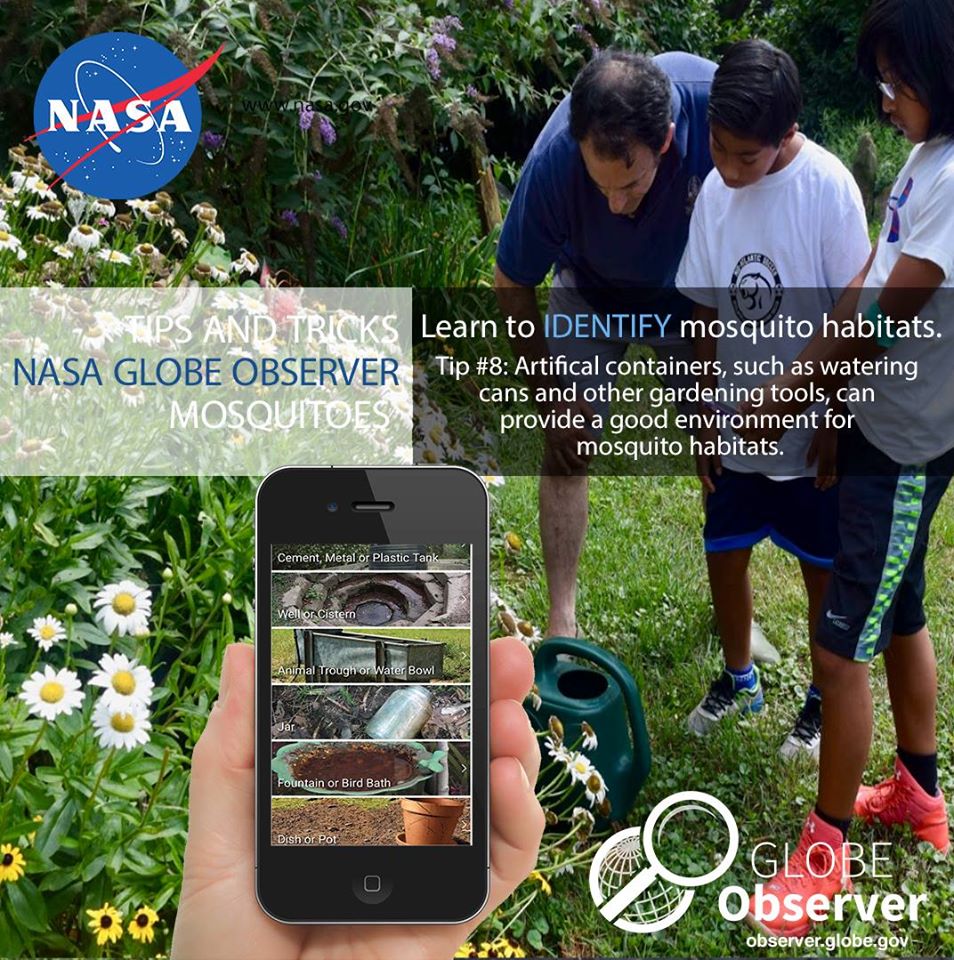

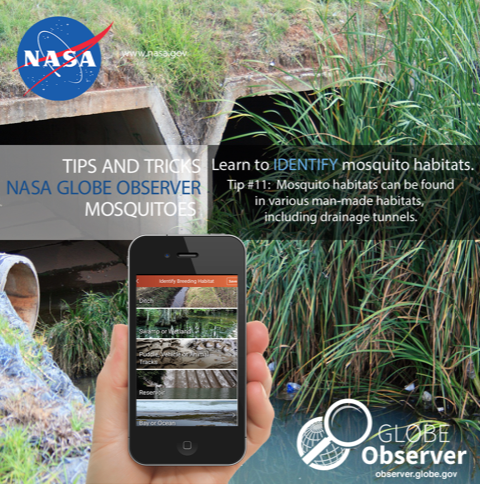
Frequently Asked Questions - Mosquito Habitat Observations
This section is for questions about how to use the app to take observations. If you have an overall app question, not specifically about the Mosquito Habitat Mapper tool, try the general FAQ page. Science-focused questions (such as why scientists study mosquitoes and the NASA connections to the data) are covered on the Mosquito Science page.
We focus GLOBE Observers on larvae, an immature developmental stage of the mosquito which does not transmit disease to humans. However, you are likely to encounter adult mosquitoes that can transmit disease in the same places you find larvae. While you are out making observations, use appropriate protection such as long-sleeved shirts and long pants to prevent mosquito bites. Apply approved insect repellents to skin and clothing as directed on the product label. DEET-containing products are one example. Minimize exposure time by collecting samples and returning indoors to analyze the samples. For more information, here is mosquito bite prevention information in the U.S. and for travelers from the Centers for Disease Control and Prevention, as well as tips for mosquito control around the home from the Army Public Health Center, Entomological Sciences Program.
To identify and report potential breeding sites (and eliminate them if you are able), no equipment beyond your smartphone is needed. If you wish to sample and count the larvae, you will need a cup, bulb syringe or other container to obtain a sample. To actually identify the genus of a collected larva, you will need a white surface such as a plastic or paper plate to place the larva on (suspended in a drop of water), as well as magnification to see the required features as you work through the identification key. We recommend using a camera macro lens attachment with a minimum of 60x magnification (100x is even better). A number of relatively inexpensive models can be found online.
You may find mosquitoes anywhere that provides a pool of still water that allows the larvae to grow and develop. Different mosquitoes prefer different habitats. The yellow fever (Aedes aegypti) and Asian tiger (Aedes albopictus) mosquitoes are well adapted to human-built environments. Their ancestors preferred tree holes as breeding sites, but now they seek out water sources near the humans and animals that provide blood for the female to nourish her eggs. These mosquitoes now preferentially seek out manufactured containers as breeding sites, from discarded water bottles and tires to water tanks, sewers, and flowerpots.
You will find a range of habitat examples in Mosquito Habitat Mapper tool. Larvae can be found in water sources as small as a bottle cap and as large as a cistern. Eliminating these habitats – by dumping out the water or covering the container with a lid or net—will mean fewer mosquitoes near your home or school, making your family and community safer from disease.
Mosquitoes are often found in the rainy season or shortly after the end of the rainy season, but in some regions, mosquitoes are found year-round. Temperature is a very important factor for when you will start to see mosquito larvae, especially in higher latitudes.
Many magnifying lenses for mobile devices work best when they are attached as close as possible to the camera lens. Try temporarily removing your device case to get a closer attachment. Some lens attachments also allow you to adjust their focus, so check that you have made any adjustments there as well.
If you have the photos on your phone (however they were originally captured), they can be included with a Mosquito Habitat Mapper observation. When you add a photo in the app, you can select "Take Photo" or "Choose Existing," so you just need to have the photos available on the camera roll on the phone and select the second option.
The app is optimized for use in identifying the yellow fever mosquito (Aedes aegypti) and the Asian tiger mosquito (Aedes albopictus). GLOBE Observer selected these two because they are found worldwide and the adults of these species have the potential to transmit pathogens causing several human diseases. Using the app and a macrolens, you can identify your specimen to genus (Aedes) or species (A. albopictus, A. aegypti, or Aedes, undifferentiated).
You can also use the app to identify Culex and Anopheles genera. Some species of Culex are vectors for West Nile virus. If you find Culex mosquitoes, you can consult a local key to see what species you have. Anopheles is a genus of which some species of mosquitoes that transmit the pathogens that cause malaria. The responsible species are different in different parts of the world, so once again, you will want to consult a local key to find the exact species. Download a diagram comparing the life stages of the three genera of mosquitoes we look for in the app.
The three genera we are looking for in the app are Aedes, Culex, and Anopheles. However, there are 41 genera and more than 3,500 species of mosquitoes, so you may find mosquitoes that are not from the three target genera. If your larva is not one of these three, you can select “other.” It still important to mitigate the habitat, regardless of the type of larvae discovered.
Not all specimens can be identified! A specimen might be damaged during retrieval (such as in a net), or may not have clear features that you can use in identification. For example, in earlier stages of larval development, the features may have not fully matured. You will have the best results if you choose your largest (oldest) larval specimens to identify. Other times, the larva is lying in such a way that the features are not visible. Try use a toothpick to gently move the larva so that the features are in full view. The app shows images suggesting how to best position the mosquito larva for identification. You may need to look at two or three mosquito larvae in your sample before you can make a final determination. Even if you can't identify the larvae, documenting the site is still a valuable observation.
Not always! It is common to find only one species in a sample, but it’s good to check a few specimens just to be sure.
You may be able to get some indication without magnification. If you see larvae resting parallel with the water surface, you likely have Anopheles, as it is the only genus that has this characteristic. On the other hand, Aedes and Culex larvae cling to the water's surface at an angle of 45° compared to the side of the container. Aedes larvae have shorter, spindle shaped siphons and Culex larvae tend to have longer, cylindrical siphons, which may be visible without full magnification. Download a diagram comparing the life stages of the three genera of mosquitoes we look for in the app.
One reason may be that the larvae are at different stages of development. After hatching from its egg, the larva is in its first instar (stage between molts). It eventually outgrows its exoskeleton and molts (loses its outer covering) to become a second instar. The larva goes through two more molts to reach the fourth instar. The fourth instar is the larval stage that is most visible, reaching a length of nearly 1 cm. The features used to identify your specimen are seen on the fourth instar larva, so look for the biggest larvae in your sample. If you can’t distinguish any features, it is possible that the larvae are still in an earlier instar stages. If that is the case, you can count your larvae, but you will not be able to identify features. The fourth instar will molt to become a pupa, another stage in the lifecycle of a mosquito. Pupa are distinguished by their appearance, which is the shape of a comma. You may find pupae in your sample in addition to larvae.
Depending on the temperature and nutrients, larvae develop into pupae after a few days to a week. A pupa will usually develop into an adult within a day. If you want to collect larvae and identify them a day or two later, you can refrigerate live specimens to slow down their development, or put the larvae in ethyl alcohol or isopropyl alcohol. The alcohol will kill the larvae, which may also make it easier to arrange them in the viewfinder of your magnifier to look for the necessary features for identification.
You don’t want to get bitten by the adults, so gently shake or turn the sample over and drown the adults. Do not open a container or bag that contains live flying adults.
Mosquito larvae are harmless, you can throw out the water sample on the ground or in the grass. They will die if they are not in a water source. If you have used ethyl alcohol or isopropyl alcohol to preserve the samples, check the container for disposal instructions.
Mosquito Habitat Mapper Infographic
A step-by-step infographic on the use of the GLOBE Observer Mosquito Habitat Mapper tool.
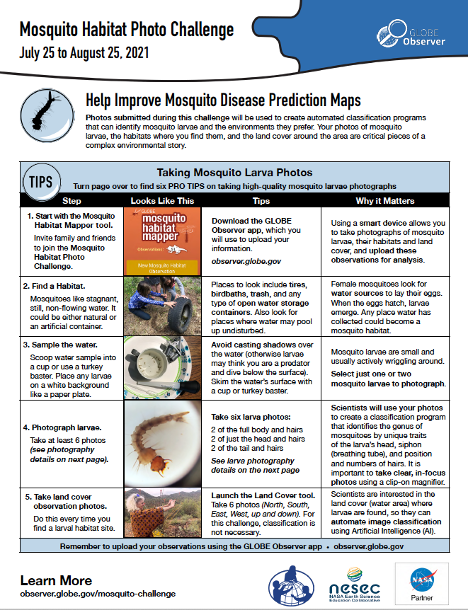
Mosquito Habitat Photo Challenge Photo Tips Handout
This handout describes the process of taking mosquito habitat and land cover observations during the Mosquito Habitat Photo Challenge, and gives tips about how to take high-quality mosquito larvae photos.
Step-by-Step Mosquito Habitat Mapper Tutorial
Step-by-step illustrated guide to collecting specimens and observations with the GLOBE Observer Mosquito Habitat Mapper.








